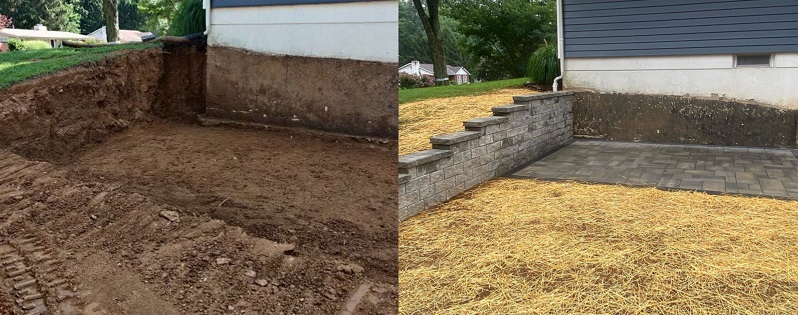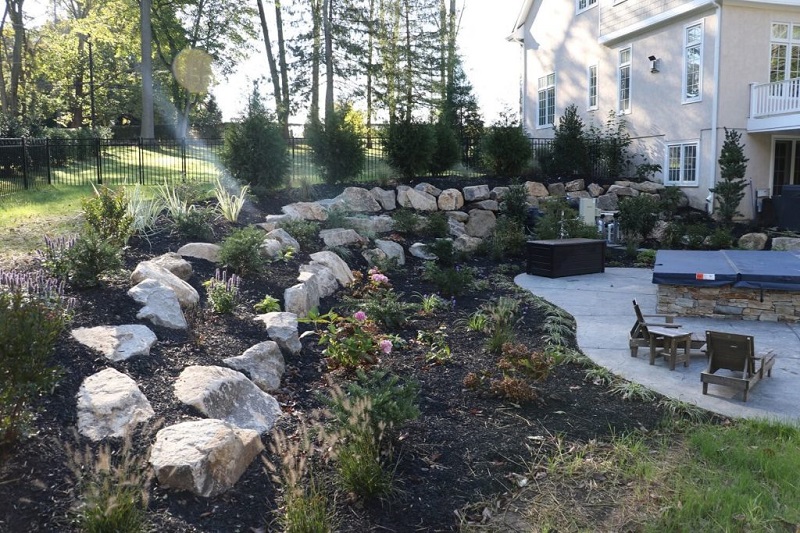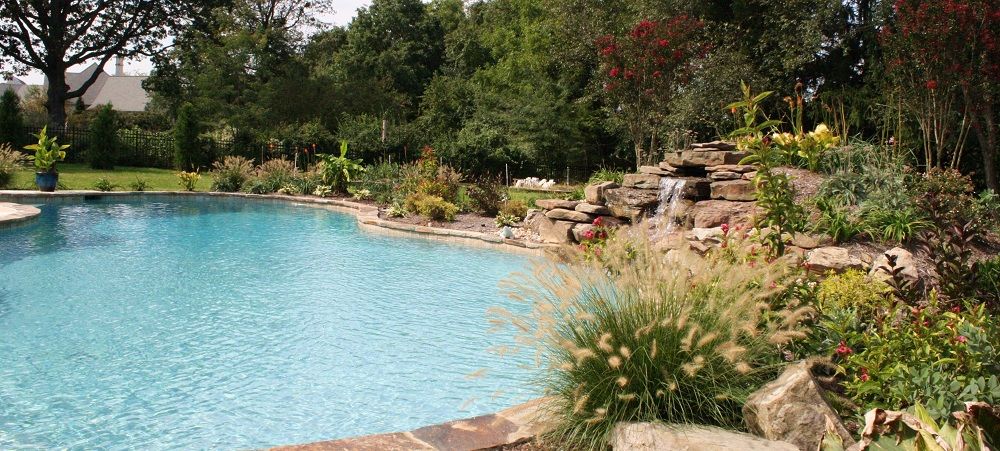The Benefits of Land Grading
Do you dream of building your ideal backyard but find your landscape too hilly or uneven? Land grading can transform your landscape into a smooth, even, and more usable space. Burkholder Landscape can re-grade your property to increase its usability, create a level area for special features, or mitigate drainage issues.
Check Out Our Landscaping Services!
What Is Land Grading?
Land grading, or landscape grading, reshapes earth and soil so the land is more stable and leveled. The grading process involves first digging up the selected areas and moving the dirt from one location to another, such as moving dirt from a high section of the land to a lower region. Once the earth has been moved, the professionals will smooth out the ground. Then, permanent vegetation is established to stabilize the soil. After vegetation has fully grown, the newly leveled, uniform surface can easily be used in any outdoor project. Grading your land has numerous benefits, such as easier use in outdoor projects, reduced soil erosion and surface runoff, and reduced damage to your home.

Benefits of Landscape Grading
Land grading has many benefits for your landscape, from laying a better groundwork for future construction projects to preventing water accumulation or poor drainage damage to an overall more lush, vibrant landscape.

1. Simpler Landscape Construction
One key benefit of land grading for homeowners is the enhanced safety and ease of use of their landscape for future projects. For instance, a homeowner may desire a smooth stone walkway in front of their home. However, the uneven landscape poses a safety risk. Land grading can create a level surface, making landscape and walkways safer to build and use.
The same applies to larger projects like patios, pools, or outdoor kitchens. Property owners want to use their beautiful landscapes and build on them. Land grading makes constructing those dream landscapes possible, even if a yard has a slope.
2. Prevent Water Drainage Damage
Another primary reason homeowners opt for land grading is improving water drainage and preventing damage to their homes from water pooling. Uneven land prevents proper water drainage, and during heavy rainfall, the water can flow towards the building rather than away. The water can potentially accumulate around the foundation, which can create cracks or, in worst-case-scenarios, flooding..
By reshaping the surface angle, land grading prevents water from building up around your home’s foundation and channels any water during rain or storms away from your home. Proper water drainage is crucial to construction or landscaping projects. When a skilled company performs land grading, the proper drainage channels are established and utilized to maintain your home’s integrity.
3. Use of Entire Landscape
Sloped yards can make parts of a landscape virtually unusable. For example, if a home is built on a steep slope that leads up to a back door, the backyard is unable to support a patio or other features for outside enjoyment. Landscape professionals can re-grade the land and carve out a flat surface to build patios with steps leading down from the main level and add different features, such as outdoor kitchens or fire pit areas.
4. Healthier Landscape & Plants
In addition to preventing damage to your home, land grading can prevent damage to your landscape and make your plants healthier. Part of the reason land grading can improve plant health is the previously mentioned water drainage issues. During rainfall, the water can pool in a specific lawn area, like the bottom of a hill. That water pooling can lead to grass and other plants becoming overwatered and eventually damaged. Plus, overwatered landscapes tend to attract mosquitos and other pests.

How Long Does the Land Grading Process Typically Take?
Proper grading typically takes several days to complete, depending on the size and complexity of the project. Larger projects may take several days to complete, while smaller areas can be graded more quickly.
Are There Any Specific Requirements or Considerations Before Starting a Land Grading Project?
Before starting a land grading project, we consider any local regulations or permits that may be required for earth-moving activities. Additionally, we assess the existing utilities and underground structures to ensure that the grading process poses no interference with any essential services.
Does Soil Type Affect Land Grading?
Soil type is a critical factor in land grading. Different soils have varying properties:
- Compaction: How well the soil can be compressed.
- Drainage: How quickly water moves through the soil.
- Erosion potential: How susceptible the soil is to erosion.
- Shear strength: The soil’s resistance to deformation.
These properties directly influence the grading process and the outcome. Different types of soil have different properties:
- Clay soils: High water content, difficult to compact, prone to erosion.
- Sandy soils: Good drainage but can be loose and unstable and may require additional slope stabilization.
- Loamy soils: Generally well-suited for grading due to good drainage and stability.
- Rocky soils: Requires specialized equipment and techniques due to the presence of rocks.
Before any grading project, we conduct a thorough soil analysis to understand the properties of your soil. This information helps in:
- Equipment selection: Choosing the right machinery for the job.
- Material requirements: Determining if additional materials like fill or gravel are needed.
- Drainage design: Planning effective drainage systems to prevent erosion and waterlogging.
- Slope stability: Assessing the risk of slope failure and taking necessary precautions.
Contact Burkholder Brothers for the Benefits of Land Grading
Burkholder Brothers is your trusted partner if you want to experience the transformative benefits of land grading services for your home. With our high-quality materials and decades of experience in the Main Line area, we have created and refined quality landscapes that exceed our customers’ expectations. Our passionate and experienced landscape professionals will work with you to bring your dream backyard to life. For more information on our services, contact us today.












 Malvern, Pennsylvania – March 24, 2017 – Main Line landscaping company, Burkholder Brothers, is proud to announce the opening of their Outdoor Living & Design Center. Their new showroom is located at 359 Paoli Pike in Malvern, formerly known as Potter’s Nursery and located at the intersection of Paoli Pike and Sugartown Roads.
Malvern, Pennsylvania – March 24, 2017 – Main Line landscaping company, Burkholder Brothers, is proud to announce the opening of their Outdoor Living & Design Center. Their new showroom is located at 359 Paoli Pike in Malvern, formerly known as Potter’s Nursery and located at the intersection of Paoli Pike and Sugartown Roads.